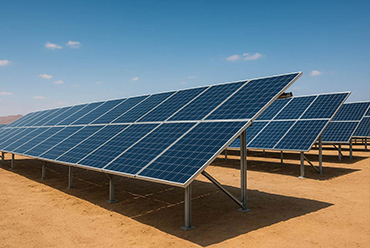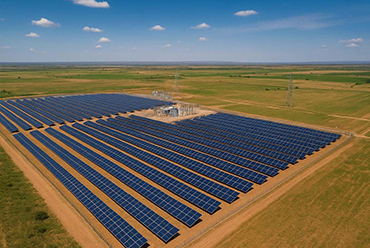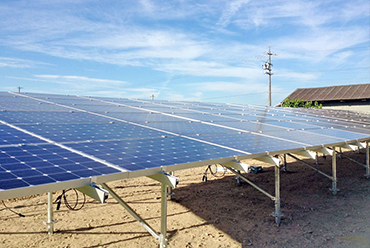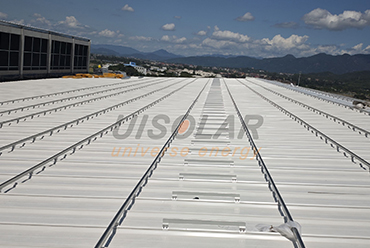
Egypt’s Ministry of Electricity and Renewable Energy, the Egyptian Electricity Transmission Company, and a consortium led by Infinity Power and Hassan Allam Utilities Energy Platform have signed an agreement to develop solar power projects totaling 1.2GW, supported by a 720MWh battery energy storage system. The project will be implemented in two phases across different regions. Phase one includes the construction of a 200MW solar power plant with 120MWh of storage at the Benban Solar Park in Aswan, with commercial operation expected to begin in Q3 2026. As one of the world’s largest solar parks, Benban already hosts multiple photovoltaic projects, and the new facility will further strengthen its role as a key regional renewable energy hub. Phase two will see the development of a 1GW solar plant in Minya Governorate, paired with 600MWh of storage capacity, with grid connection targeted for Q3 2027. Egypt’s Minister of Electricity, Mahmoud Esmat, highlighted that the large-scale storage systems will enhance grid stability and improve peak shaving, supporting the integration of renewable energy. The project aligns with Egypt’s clean energy strategy, supported by increased government investment of USD 2.8 billion for the 2025–26 fiscal year. Once completed, it will contribute significantly to Egypt’s targets of reaching 42% renewable energy by 2030 and 65% by 2040.
Read More
October 28 (Local Time), South Africa — The 240MW PV2 Solar Power Plant, currently the largest single-site solar project in South Africa, has officially been energized. The project marks a significant step toward enhancing the country’s clean energy supply and improving grid stability. Located in the Northern Cape Province on the Mooiplaats Farm, the project scope includes construction of a 240MW photovoltaic plant, a step-up substation, a switching station, and an 11.3-kilometer transmission line connecting the switching station to the Koruson main substation. Once fully operational, the plant is expected to deliver 360 million kWh of green electricity annually, helping alleviate national power shortages and accelerating South Africa’s transition toward a cleaner and more sustainable energy structure. UISOLAR congratulates all partners involved in this milestone and remains dedicated to supporting global renewable energy development with reliable solar mounting solutions.
Read More
China Energy Engineering Corporation Ltd. (CEEC) has successfully completed the transaction for its first renewable energy investment in Brazil — the Coremas Photovoltaic Project. CEEC Overseas Investment Co., Ltd. is now the controlling shareholder and will oversee the operation and management of the project. This marks a significant milestone for CEEC’s expansion in the South American renewable energy market, bringing new momentum to China–Brazil cooperation in clean energy. Located in Paraíba State, northeastern Brazil, the Coremas PV Project has a total installed capacity of 93 MW and an annual generation of 167 million kWh — enough to power over 80,000 households each year, reducing about 20,500 tons of standard coal and cutting carbon emissions significantly. The project has also created nearly 100 local jobs, boosting the regional economy and improving community livelihoods. Going forward, CEEC Overseas Investment will enhance the project’s operation and maintenance, upgrade system performance, and build the Coremas PV Project into a benchmark solar project in South America. Guided by CEEC’s “Four New” strategy, the company will strengthen cooperation with local governments, industry leaders, and financial institutions to advance clean energy and sustainable development in the region. Summary CEEC has completed its first renewable energy investment project in South America — the 93 MW Coremas PV Project in Brazil, marking a major step in China–Brazil green energy cooperation.
Read More
The Saudi Electricity Purchasing Company (SPPC) recently announced the launch of the seventh round of the National Renewable Energy Program (NREP) and issued prequalification (RFQ) notices for four projects, totaling 3.1GW of solar PV capacity. These include a 1.4 GW (AC) power plant near Hima in Juv province, a 600 MW (AC) power plant planned for Bissa in Asir province, a 500 MW (AC) project planned for Madina province, and a 600 MW (AC) project planned for near Mawqaq in Khaire province. Successful bidders will be required to develop and operate the power plants under a build-own-operate (BOO) model. The prequalification deadline is September 29th. In September 2024, the SPPC launched a tender for 3GW of solar PV capacity across four projects. These include a 1.4 GW power plant near Hima in Najlan province, a 600 MW power plant near Ad Darb in Jizan province, a 600 MW project in Jizan province, and a 400 MW project near Al Sufun in Khairi province. In October 2024, the SPPC announced the winners of its fifth round of projects, totaling 3.7 GW, distributed across four projects: the 2 GW Al Sadawi power plant in the east, the 1 GW Al Masa'a project in Hail in the north, the 400 MW Al Henakiyah 2 power plant in western Medina, and the 300 MW Rabigh 2 power plant in western Mecca.
Read More
1. Industrial Chain (1) Upstream: polysilicon and silicon wafers Polysilicon is the most upstream link in the photovoltaic industry chain and the basic raw material for manufacturing monocrystalline and multicrystalline silicon materials. In the silicon wafer sector, Jiangji Green Energy and Zhonghuan Semiconductor have successfully dominated the silicon wafer market supply structure by continuously increasing investment in technological innovation, continuously optimizing production processes, and actively promoting capacity expansion strategies. Their products are not only widely used in the domestic market, but also exported to many countries and regions overseas. In terms of silicon wafer technology, large-size and thin-wafer technology are the main development trends. Large-size 182mm and 210mm silicon wafers have become the mainstream market, with a market share exceeding 95%. At the same time, with the development of N-type cell technologies such as TOPCon and HIT, the demand for N-type silicon wafers is growing rapidly, and the market share of N-type silicon wafers is expected to exceed 50% in 2025. Figure: Domestic polysilicon monthly output (10,000 tons) Chart: Silicon wafer price trend (2) Midstream: Battery Cells and Components Solar cells are a core component of the photovoltaic industry chain, and their conversion efficiency directly impacts the power generation performance of photovoltaic systems. Currently, the main solar cell technologies on the market include PERC, TOPCon, HJT, and xBC. The theoretical upper limits of conversion efficiency vary among different technology paths: PERC is 24.5%, TOPCon is 28.7%, HJT is 28.5%, and xBC is 29.1%. In terms of mass production conversion efficiency, PERC is approximately 24%, TOPCon is approximately 26%, HJT is approximately 26%, and xBC is approximately 27%. Figure: Comparison of cell processes (3) Downstream: System Integration and Application The downstream segment primarily includes photovoltaic system integration, installation, and operation and maintenance services. As the cost of photovoltaic systems continues to decline, application scenarios are expanding, from large-scale ground-based power stations to distributed photovoltaics, from building-integrated photovoltaics (BIPV) to water-based photovoltaics and transportation photovoltaics, forming a diversified application landscape. By the end of March 2025, China's installed photovoltaic power generation capacity reached 945 million kilowatts, a year-on-year increase of 43.4%, including 534 million kilowatts of centralized photovoltaic power generation and 411 million kilowatts of distributed photovoltaic power generation. In the first quarter of 2025, China's newly connected photovoltaic power generation capacity reached 59.71 million kilowatts, including 23.41 million kilowatts of centralized photovoltaic power generation and 36.31 million kilowatts of distributed photovoltaic power generation. In the distributed...
Read More
UISOLARis proud to announce the successful completion of a major 2.5MW commercial solar project in Xiamen, China. This large-scale installation features our industry-leading standing seam roof clamping technology, chosen for its unparalleled reliability and roof integrity protection. Our specialized clamps were meticulously installed on the facility's metal roof, creating a robust mounting solution without a single penetration to the roof membrane. This ensures a completely watertight seal and preserves the building's structural warranty. Engineered for high wind resistance, our clamping system guarantees that this 2.5MW array will deliver clean, sustainable energy for decades to come. This project in Xiamen stands as a testament to our commitment to providing innovative, efficient, and secure solar mounting solutions for large-scale commercial and industrial applications. Key Project Highlights: Project Scale: 2.5 Megawatts (MW) Location: Xiamen, China Solution: Non-Penetrating Standing Seam Clamps Key Benefit: Maximum Roof Integrity, Superior Wind Uplift Resistance
Read More online service
online service +86 (0592)5663849
+86 (0592)5663849 sales@uisolar.com
sales@uisolar.com solar-mount.au
solar-mount.au